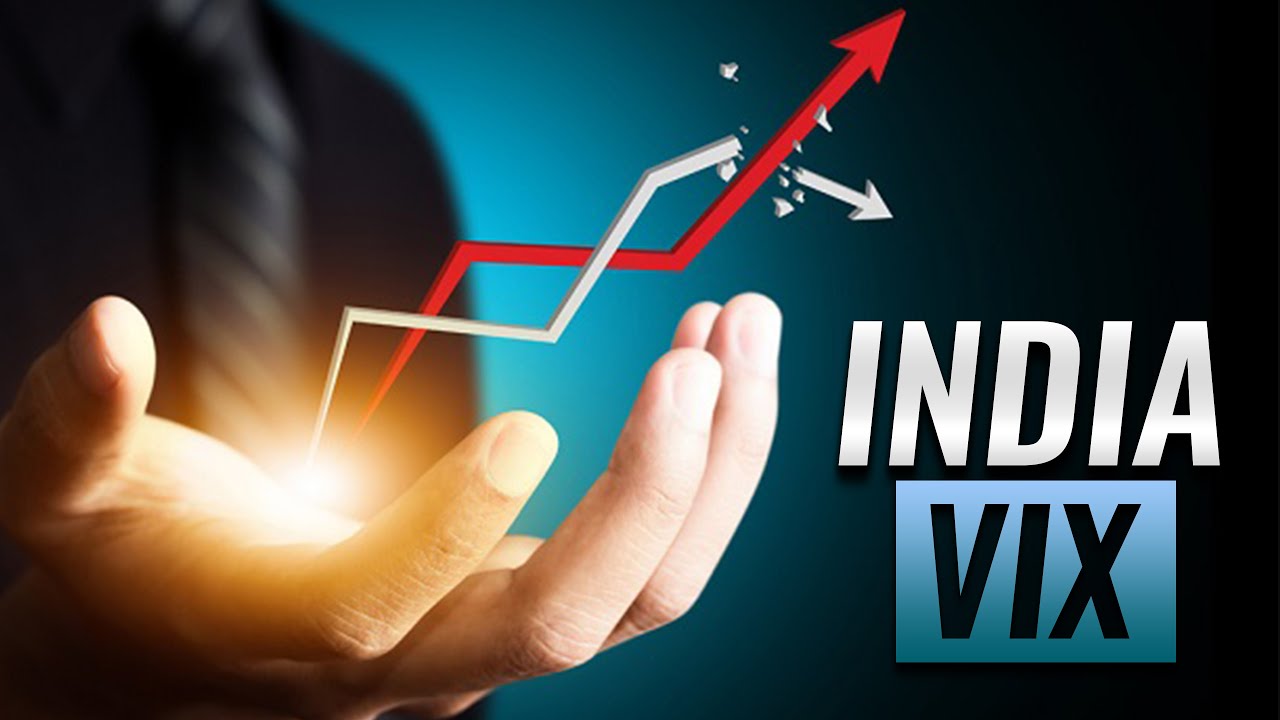India’s financial markets are known for their unpredictability and volatility, which can make investing in them a risky proposition. To mitigate this risk, investors often look to various indicators and indices to help understand the market’s behavior. One such index is the India VIX (Volatility Index), which measures the expected volatility of the Nifty 50 index over the next 30 days.
While many investors may be familiar with other popular volatility indices such as the CBOE Volatility Index (VIX) in the United States, understanding Indiavix requires a deeper dive into India’s unique economic and market conditions.
Introduction to Indiavix: Exploring Market Volatility in India
Indiavix, also known as the India Volatility Index, is a measure of market volatility in India. It is similar to the VIX index in the United States and helps investors gauge the level of uncertainty and risk in the Indian stock market. Indiavix is calculated based on the prices of NIFTY 50 options and reflects investor expectations for market volatility over the next 30 days.
Investors can use Indiavix to make informed decisions about their investments. A higher Indiavix generally indicates greater levels of uncertainty and risk, while a lower reading suggests that market participants are more confident and comfortable with current conditions. As such, investors may adjust their investment strategies accordingly to account for changes in volatility.
Indiavix can also be used as a tool for hedging against risk in Indian markets. Investors can purchase options contracts based on Indiavix readings to protect themselves from potential losses due to increased volatility. Overall, understanding how Indiavix works is an important step towards becoming a successful investor in Indian markets.
What is the Indiavix? Understanding the Concept and Calculation
Indiavix, also known as the India Volatility Index, is a measure of market expectations of volatility over the next 30 days in the Indian stock market. It is calculated by taking into account the prices of Nifty call and put options. Indiavix is an important tool for investors and traders to gauge market risk and make informed decisions.
Indiavix calculation involves selecting two nearest-to-expiry Nifty option contracts with minimum time to expiry of 7 days, computing their implied volatility values, and averaging them to arrive at a single value that represents the volatility expectation for the next 30 days. The higher the Indiavix value, the greater expected volatility in the market.
The significance of Indiavix lies in its ability to help investors assess risks related to changes in prices or returns. A higher Indiavix indicates higher uncertainty and risk perception among investors while a lower one suggests complacency or confidence in stable markets. Understanding how Indiavix works can be beneficial for traders who want to hedge their portfolios or capitalize on potential trends in Indian equities markets.
Also Read: HighRich
Indiavix and its Significance in the Indian Financial Market
Indiavix is an important tool for investors to understand the volatility of the Indian financial market. It measures the expected volatility of the Nifty 50 Index, which is a benchmark index that represents the top 50 companies listed on the National Stock Exchange (NSE).
The Indiavix is calculated based on the price of options contracts. Options are derivative instruments that give traders the right, but not obligation, to buy or sell an underlying asset at a predetermined price and time. The higher demand for options contracts indicates higher uncertainty and risk in the market, resulting in a higher Indiavix value.
Investors use Indiavix as a measure of risk and uncertainty in their investment decisions. Higher values indicate increased volatility and potential for larger losses, while lower values suggest stability and low-risk investments. Therefore, traders can use this tool to hedge their portfolios against sudden market movements by buying or selling options contracts accordingly. Overall, understanding Indiavix is crucial for investors looking to navigate India’s financial markets effectively.
Interpreting Indiavix: How to Analyze Market Sentiment and Risk
Interpreting Indiavix is essential for investors to analyze market sentiment and risk in India’s stock market. Indiavix, also known as the India Volatility Index, measures the expected volatility of the Nifty 50 index options over a 30-day period. It helps investors assess the level of uncertainty and fear prevailing in the market.
A high Indiavix indicates that there is a higher degree of uncertainty or fear among traders about future market movements. Conversely, a low Indiavix suggests that investors are more confident about future market movements. By analyzing past trends in Indiavix values, investors can gain insights into how the markets may behave in future.
Investors can also use Indiavix to manage their portfolio risk by purchasing put options when Indiavix is high and selling call options when it is low. The key takeaway from interpreting Indiavix is that it provides valuable information on market sentiment and risk that can help investors make informed decisions about their investments.
Also Read: The future of online forex trading: trends and predictions
Factors Affecting Indiavix: Key Drivers of Volatility in India
Indiavix is India’s volatility index that measures the expected volatility of the Indian stock market over the next 30 days. Several factors affect Indiavix, including global events such as economic policies and political developments in major economies like China and the U.S. Domestic factors such as changes in government policies, corporate earnings reports, and economic indicators also impact Indiavix.
The key driver of Indiavix is the level of uncertainty or fear among investors regarding future market movements. This uncertainty can stem from various sources, such as geopolitical tensions, natural disasters, or unexpected changes in company leadership. Additionally, liquidity constraints that cause a shortage of available funds for trading can also contribute to an increase in Indiavix.
Other important factors affecting Indiavix include market sentiment and investor behavior. The level of optimism or pessimism among investors often determines whether they will buy or sell stocks. If there is a high degree of negativity in the market due to negative news flow or bearish trends, then this could drive up Indiavix leading to increased volatility levels across all asset classes.
Historical Trends and Patterns: Examining Indiavix Over Time
Examining Indiavix over time provides valuable insights into historical trends and patterns in India’s financial markets. The index, which measures the market’s expectation of volatility over the next 30 days, has shown significant fluctuations since its inception in 2008. In particular, it spiked dramatically during times of economic uncertainty such as the global financial crisis in 2008 and the COVID-19 pandemic in 2020.
Looking at Indiavix over time also highlights the impact of major events on market volatility. For example, the index rose sharply following India’s demonetization policy in 2016, which removed high-value banknotes from circulation. Similarly, it increased during periods of heightened political tension such as the Indian general election in 2019.
Overall, analyzing historical trends and patterns through Indiavix can provide valuable insights for investors and policymakers alike. By understanding how market volatility has behaved in response to past events, stakeholders can better prepare for potential future changes and make informed decisions to mitigate risk.
Using Indiavix for Investment Decision-Making: Strategies and Insights
Indiavix is a crucial tool for investors as it helps them gauge the market’s volatility and make informed investment decisions. One strategy that investors can use is to buy stocks when Indiavix is low and sell when it is high. This strategy works because during periods of low volatility, many stocks do well, while high volatility often leads to lower stock prices.
Another way that Indiavix can be used for investment decision-making is by analyzing its historical trends. Investors can look at past data to identify patterns in the market’s behavior during periods of high or low Indiavix readings. By doing this, they can gain insights into how the market might behave in the future and adjust their portfolios accordingly.
In summary, understanding Indiavix and using it for investment decision-making requires a thorough understanding of how it works and its historical trends. By utilizing strategies such as buying low and selling high or analyzing past data, investors can make better-informed decisions about where to allocate their funds in an ever-changing marketplace.
Indiavix vs. Other Volatility Indices: A Comparative Analysis
Indiavix is India’s very own volatility index. It measures the market’s expectation of near-term volatility based on Nifty 50 index option prices. However, how does Indiavix compare to other global volatility indices? Is it more or less volatile than its international counterparts?
One such comparison can be made with CBOE’s VIX (Volatility Index). While both are designed to measure market sentiment and predict uncertainty, there are some differences in their calculation methodologies, which lead to varying levels of volatility readings. For instance, Indiavix is based on Nifty 50 options, whereas VIX uses S&P 500 options.
Similarly, another widely used volatility index is the Europe Stoxx 50 Volatility Index (VSTOXX). Again, while both have a similar purpose and underlying assets – stocks in this case – their calculation methodology differs significantly. VSTOXX uses European-style options rather than American-style ones like Indiavix.
In conclusion, while comparing different volatility indices may provide insights into market expectations and trends globally or regionally, it is essential to consider their specific characteristics and methodology before drawing any conclusions about their relative levels of volatility.
Resources and Tools for Tracking and Monitoring Indiavix
To effectively track and monitor Indiavix, there are several resources and tools available. The first resource is the National Stock Exchange (NSE) website, which provides daily updates on the Indiavix value and its historical data. This data can be downloaded in Excel format for further analysis.
Another useful tool is the Indiavix mobile application, which provides real-time updates on Indiavix values. It also offers a graphical representation of historical trends, making it easier to identify patterns and forecast future trends.
In addition to these resources, there are several third-party websites that provide detailed analysis of Indiavix values and their impact on the Indian stock market. These websites offer research reports, news articles, expert opinions, and customized analytics tools that help investors make informed decisions based on current market trends.
Overall, tracking and monitoring Indiavix requires a combination of reliable data sources and analytical tools. With these resources at hand, investors can gain valuable insights into India’s volatility index and use this information to optimize their investment strategies accordingly.
Frequently Asked Questions (FAQs) about Indiavix
- What is Indiavix?
Indiavix is India’s volatility index, which measures the expected volatility of the Indian stock market over the next 30 days. It is calculated based on the bid and ask prices of Nifty options contracts.
- Why is Indiavix important?
Indiavix provides information about market expectations for future price movements, allowing investors to make more informed decisions about their investments. High Indiavix levels indicate increased uncertainty and risk in the market, while low levels indicate a relatively stable market.
- How can I use Indiavix in my trading strategy?
Traders can use Indiavix as a tool to gauge market sentiment and adjust their strategies accordingly. For example, if Indiavix is high, traders may want to consider buying put options or reducing their exposure to riskier assets until the market stabilizes.
- What factors affect Indiavix?
Indiavix is influenced by several factors, including global economic conditions, political events, earnings reports from major companies and central bank policies.
- Is it possible to trade directly on Indiavix?
No, it’s not possible to trade directly on Indivax itself since it’s an indicator rather than a tradable instrument like stocks or bonds. However, many brokers offer products such as exchange-traded funds (ETFs) that track the performance of volatility indices like IndiaVIX.
Conclusion About Indiavix
In conclusion, Indiavix is a vital tool for investors and traders alike in the Indian stock market. It provides an insight into market volatility, which can help in decision making for buying or selling stocks. The index has been particularly useful during times of economic uncertainty when traditional fundamental analysis may be insufficient.
Furthermore, it is essential to note that Indiavix is not a predictor of future market movements but instead reflects current sentiment. Therefore, investors should exercise caution when basing their decisions solely on this index. Other factors such as company earnings reports and global events also impact the Indian stock market.
Overall, understanding Indiavix and its role in the Indian stock market can aid investors in making informed decisions while navigating volatile markets.




